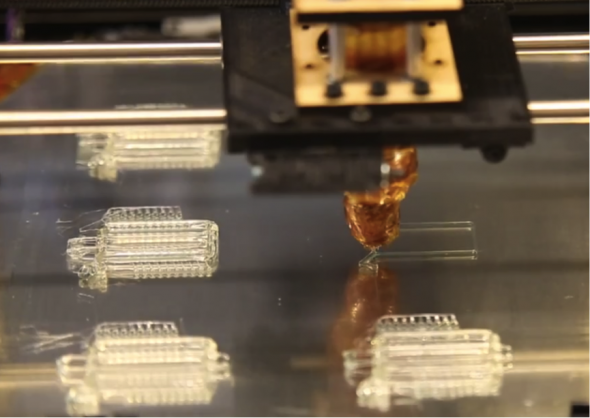Creating human organs in a laboratory has taken a substantial leap towards reality with the innovative use of 3D-printing technology.
A team of scientists from the UPenn have created a functional network of blood vessels using sugar as the main component for the structure. As opposed to earlier attemps in the same field, using sugar as the building material enables the bioengineers to assemble the blood vessels without any seams. The seamlesness in the blood vessel network translates to tightness, which per se gives the network a perfect seal.
After printing out the blood vessels using a RepRap 3D-printer the sugary network is left to harden. As the sugar has set back to its solid state, liver cells encased in a gel are inserted to the mold. When the gel has set, the process continues with removal of the gel and flushing out the remaining sugar, leaving the inserted cells unharmed and protected.
The width of the usage spectrum for the 3D-printed blood vessel networks has yet to be fully mapped out, but one of the primary applications is a logistical one – shipping out the created networks to other labs who are yet to have acquired a 3D-printer of their own.
Watch the video:
(Source and photo credit: University of Pennsylvania)



